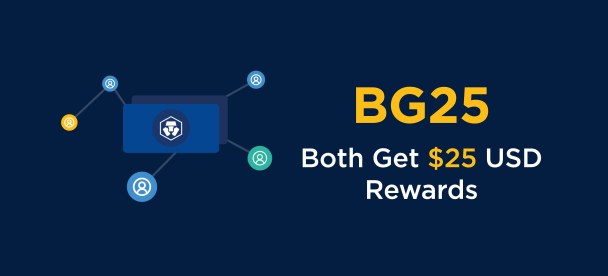A latency tester is key to choosing the right mining pool. Mine more efficiently with faster pools and earn more rewards!
November 8th 2021| Mike Humphrey
Table of Contents
Definition of Latency
Latency is the time it takes for data to be sent from one point in a network to another. Imagine yourself standing in the mountains and you decide its time to let everyone know you’re there. You let out a loud yodel. The sound travels to the mountains across from you and bounces back. The delay between you yodeling and the echo coming back is latency. Most people think of latency when talking about video game lag. The delay between you telling your character to move and it actually moving, is caused by the time required to send the information to the game server and back. Latency or ping is a measure in milliseconds of the time required to send and receive the information. A lower ping is better than a higher ping.
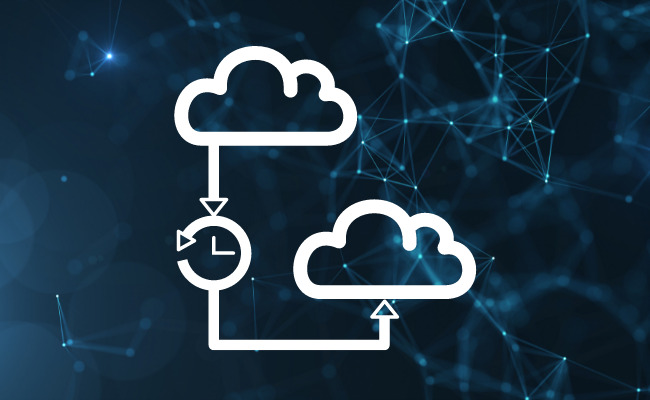
Mining Pool Latency
Latency is important for crypto miners because it can negatively impact your revenue. Pool latency affects how quickly you will send and receive hashes to and from the pool. As a miner your goal is to solve as many hashes as possible as fast as possible. Any added delays due to latency will impact every hash you attempt to solve. This means small differences in latency affect every hash and can therefore add up very quickly.
Below is an example of the impact of latency. The blue bars represent the time required to transmit information to and from the server (the latency). The grey bars represent the time required for the computers to solve a given hash (computer hash rate).
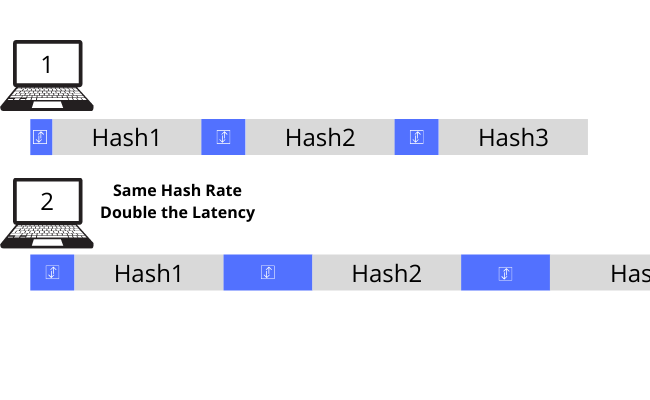
In the above diagram computer 1 and computer 2 have the exact same hash solve time, but computer 2 has double the latency of computer 1. By the time computer 1 has solved and submitted 3 hashes, computer 2 has only just started to solve hash #3. Despite both computers having the same solve time, computer 1 will have a significantly faster hash rate on the pool.
Mining Latency Tester
Before mining to any pool you should check the latency between your rig and the pool. The 2miners stratum-ping tool is a program that will test your latency. Download the software from Github and extract it to a folder to your desktop.
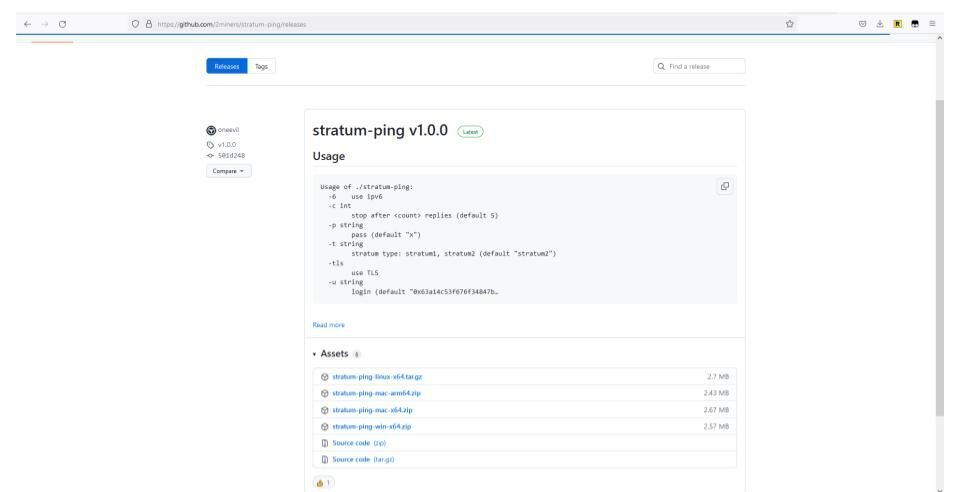
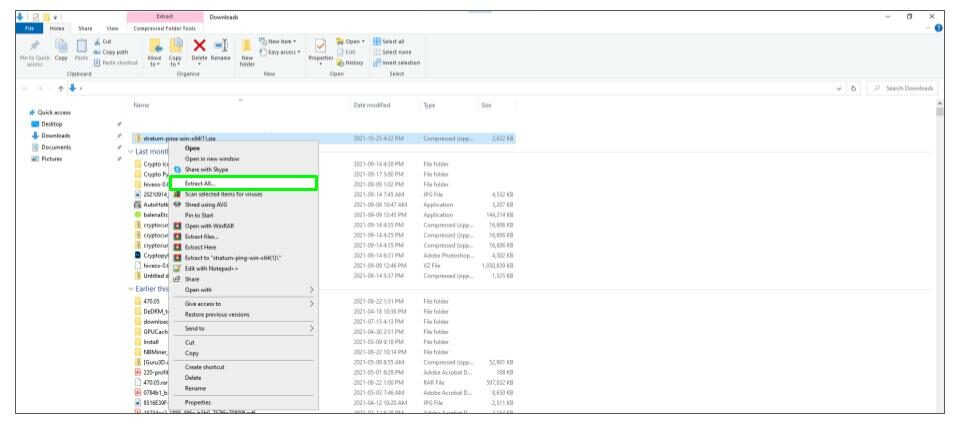
Open the folder you just created, right click on a Bat file and choose edit.
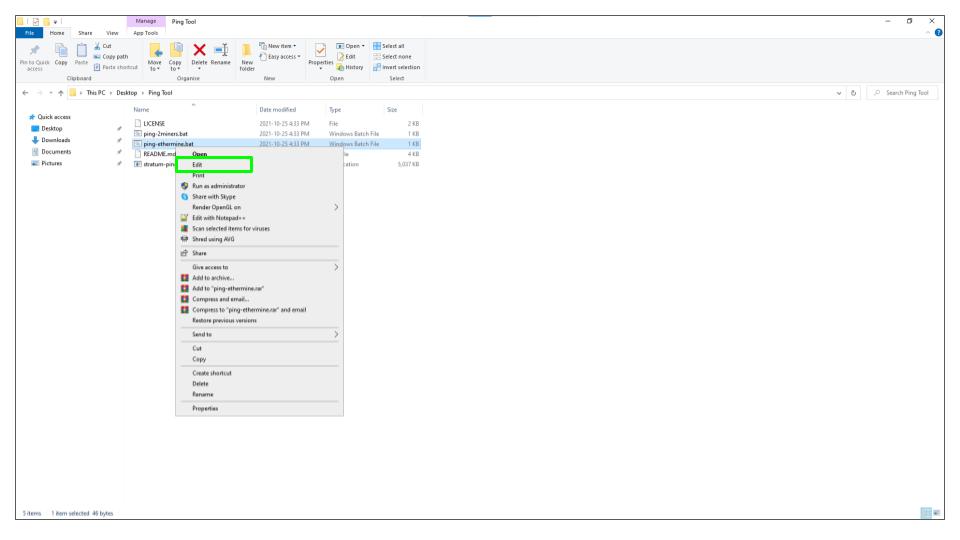
The Bat file will open in a text editor and should look something like this.
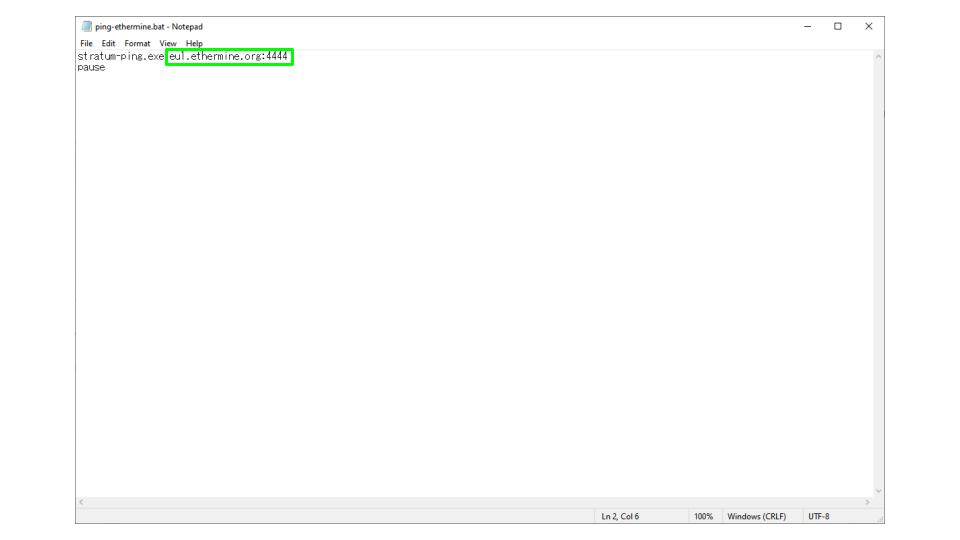
You can edit the file by replacing the mining pool address with whichever pool you want to ping. Save the file and double click to open. A command window will open and run a ping test on the pool you entered. Below is a sample of two tests. The first was to the Ethermine US1 pool and the second was to a Binance pool.
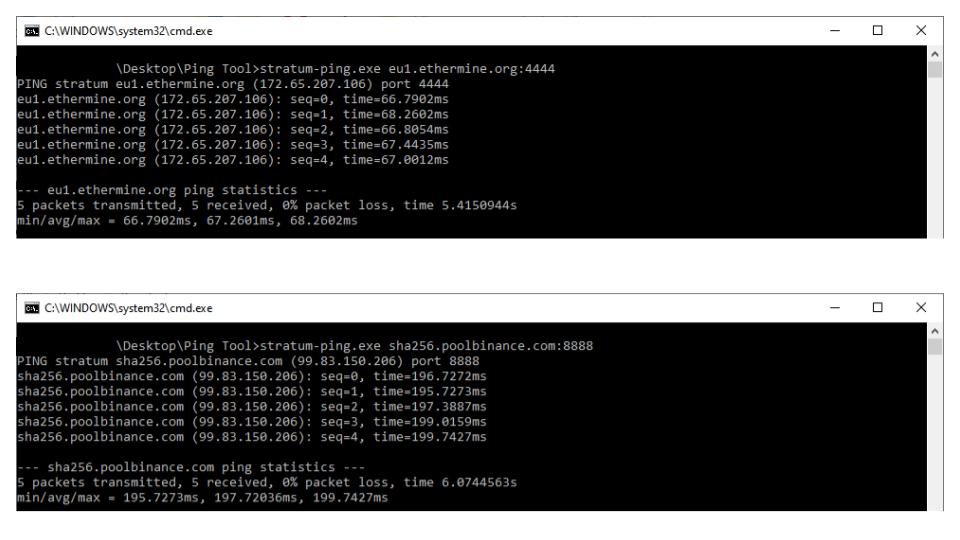
At the bottom of each window there are two lines that summarizing the results.
- 5 packets transmitted, 5 received, 0% packet loss, time 6.0744563s —> 5 packets were sent during the test and none were lost, the test took a total of 6.07 seconds to complete
- min/avg/max = 195.7273ms, 197.2036ms, 199.7427ms —> min avg and max time to send an receive a packet listed in milliseconds
The average ping was 67ms for Ethermine and 197ms for Binance. Based on these results I should mine to Ethermine instead of Binance.
What is a Good Ping
- As a guideline, a good ping is anything less than 100ms.
Finding the Best Mining Pool
When considering a mining pool there are 3 main factors you need to consider – latency, pool fees and payout method. Pool fees can range from 0%-2%, and pools will claim their fee from your rewards. Our top 3 crypto mining websites article has some great information about how to compare different pools. Pool payout methods can impact what rewards you receive and how they are distributed between miners. Read our detailed article about pool payouts to learn more. Ultimately the pool that is best for you is the one that gets you the highest payout. The two articles linked above will give you some tools to figure out which is the best pool for you.
Have you ever used a mining pool latency tester before? Let us know in the comments below.
Hi I’m Mike, an active crypto investor DeFi enthusiast and crypto miner. I have been involved in crypto since March of 2021 and in DeFi since May 2021.
I’m also an avid outdoor adventurer!
